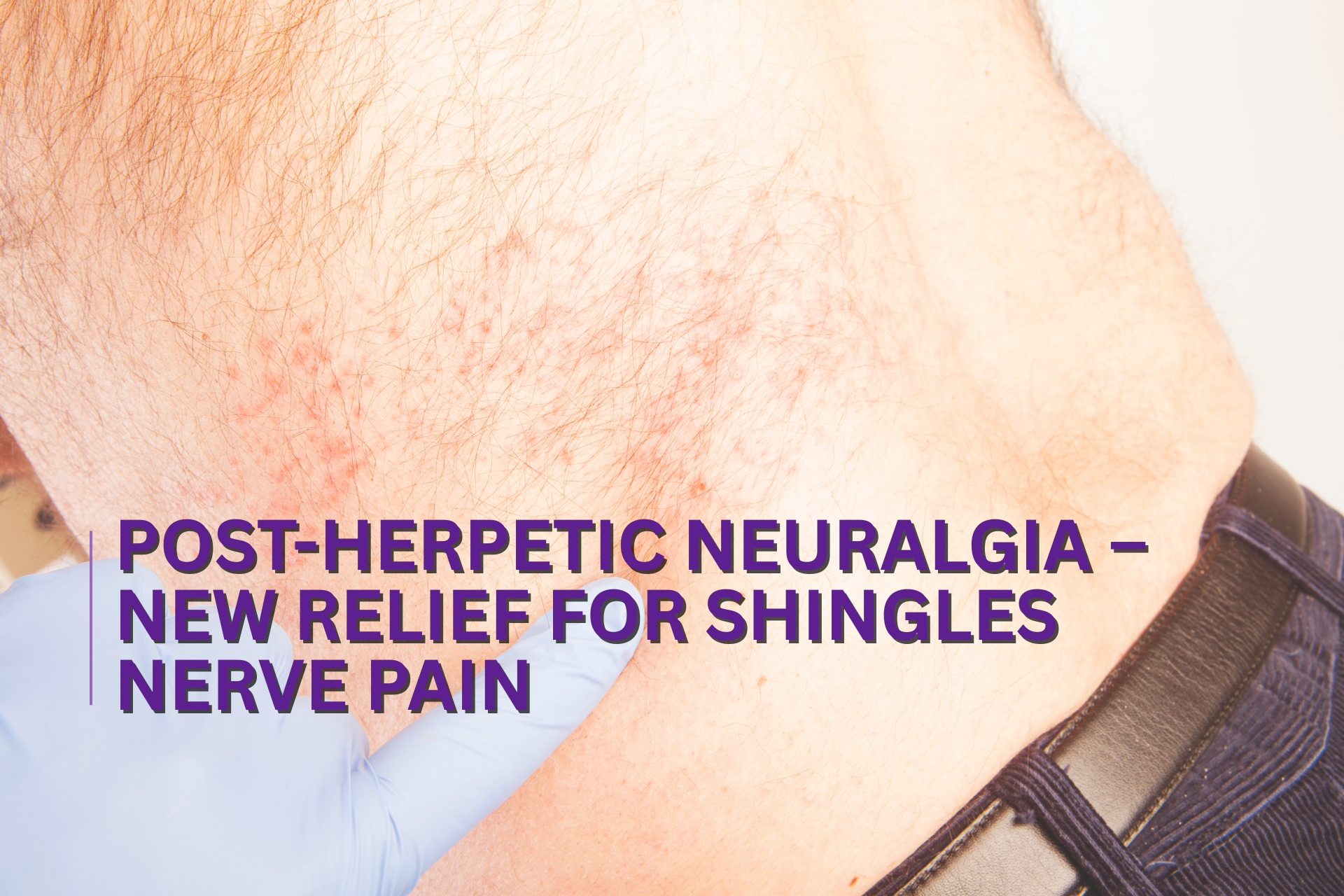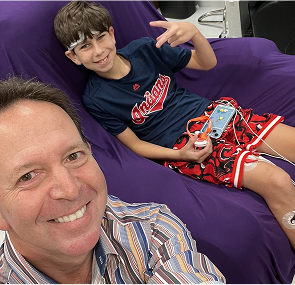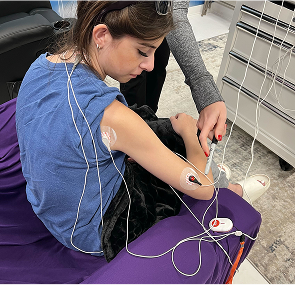Post-Herpetic Neuralgia: New Hope for Shingles Nerve Pain

Post-herpetic neuralgia (PHN) is chronic nerve pain that persists after a shingles infection (herpes zoster). It develops when damaged sensory nerves continue to misfire even after the shingles rash heals.
Shingles originates from the reactivation of the varicella-zoster virus (VZV), which also causes chickenpox. When the virus reactivates in nerve tissue, it causes inflammation, skin rashes, and blistering—often along dermatomes. In some individuals, especially older adults, this nerve inflammation doesn't fully resolve, resulting in lingering shingles pain.
How does PHN develop?
- Nerve inflammation: VZV attacks and inflames sensory nerve fibers.
- Neural sheath damage: Damaged neurons still produce unpredictable pain signals. Compile medical documents and a pain history.
- Pain persists post-infection: Pain may last for months or years, even after the rash fades.
PHN is characterized by neuropathic pain — a sharp, burning, stabbing, or tingling sensation. It affects up to 20% of people over 60 who get shingles.
Causes and Risk Factors of Post-Herpetic Neuralgia
What causes PHN after shingles?
The root cause is reactivation of the varicella-zoster virus, which stays dormant in nerve ganglia after chickenpox. Upon reactivation, it causes shingles, and in some cases, persistent nerve damage.
Who is most at risk of PHN?
Several risk factors increase susceptibility:
The immune system plays a key role. Older adults have weakened immune responses, allowing VZV to inflict more nerve fiber damage, especially in the sensory ganglia.
Symptoms of Post-Herpetic Neuralgia
What does shingles nerve pain feel like?
PHN causes a range of chronic nerve pain symptoms:
- Burning pain in areas where shingles occurred.
- Stabbing or shooting sensations, often sudden.
- Allodynia – skin becomes sensitive to light touch or temperature.
- Tingling, prickling, or numbness.
- Episodes of pain brought on by stress, exhaustion, or weather variations.
These symptoms typically localize along the same dermatomal distribution where the shingles rash was present.
What is the emotional toll?
Chronic pain from PHN can trigger:
- Depression
- Anxiety
- Sleep disturbances
- Irritability
The unrelenting nature of PHN interferes with daily life, often isolating patients socially and emotionally.
Diagnosis: How Post-Herpetic Neuralgia Is Identified
How is PHN diagnosed?
Doctors identify PHN based on:
- Medical history: Previous shingles diagnosis and pain persisting 3+ months post-rash.
- Pain mapping: Pain follows nerve paths (dermatomal zones).
- Sensory exams: Detects hypersensitivity and allodynia.
- Rule out other causes: Conditions like diabetic neuropathy or sciatica are excluded.
When should you see a neurologist?
A neurologist should be consulted if:
- Pain is severe or unresponsive to standard treatments.
- There’s suspicion of widespread neuropathy.
- Diagnosis is unclear after basic exams.
No specific test confirms PHN, but combining timeline, location, and symptoms enables accurate clinical diagnosis.
Traditional Treatments for Post-Herpetic Neuralgia
What are standard therapies?
Conventional treatments target nerve pain and inflammation:
- Antivirals (during shingles outbreak): Acyclovir, valacyclovir – reduce viral load and nerve damage.
- Anticonvulsants: Gabapentin and pregabalin modulate calcium channels to reduce nerve signal misfiring.
- Tricyclic antidepressants: Amitriptyline alters pain perception in the brain.
- Topical lidocaine patches: Numbs surface nerves in affected areas.
- Nerve blocks: Injected anesthetics temporarily stop nerve transmission.
These therapies focus on symptom relief, but not nerve healing.
New Treatments and Innovations in Post-Herpetic Neuralgia Relief
What’s new in PHN treatment?
Innovative therapies target underlying nerve dysfunction more precisely.
Latest advancements:
- Capsaicin 8% patch: High-dose capsaicin desensitizes nociceptors, offering long-term relief.
- Neuromodulation: Implanted devices stimulate spinal nerves to disrupt pain transmission.
- Laser therapy: Low-level lasers reduce inflammation in nerve tissues.
- Radiofrequency ablation: Destroys overactive pain fibers.
- New drug trials: Ongoing research into targeted neuropathic agents with fewer side effects.
Clinical innovation trends
- FDA-approved devices entering pain clinics.
- Biologic therapies in trials for nerve inflammation.
- Real-world data shows promise in combining device + drug therapies.
These treatments are reshaping chronic shingles pain care with precision-targeted solutions.
Home Remedies and Self-Care for Post-Herpetic Neuralgia
How can PHN be managed naturally?
Lifestyle strategies help manage pain and support nerve healing:
- Heat/cold therapy: Alternating compresses relieve inflammation.
- Essential oils: Lavender and peppermint reduce discomfort.
- Anti-inflammatory foods: Turmeric, omega-3s, green vegetables.
- Stress reduction: Yoga, meditation, deep breathing.
- Sleep hygiene: Consistent routines reduce pain sensitivity.
- Gentle movement: Walking or tai chi maintains mobility.
Non-medication approaches offer valuable adjunct relief, especially when combined with clinical care.
Emotional and Psychological Impact of Post-Herpetic Neuralgia
How does PHN affect mental health?
Chronic pain is linked to:
- Depression due to hopelessness and fatigue.
- Anxiety about ongoing discomfort or flares.
- Social isolation from reduced activity.
- Sleep disorders and mood swings.
How can patients cope?
- Cognitive Behavioral Therapy (CBT) helps reframe pain perception.
- Support groups provide empathy and shared experience.
- Daily routines create structure and psychological stability.
Mental health support is essential. Pain affects the brain’s limbic system, making psychological care part of holistic treatment.
Post-Herpetic Neuralgia in the Elderly: Special Considerations
Why are older adults more vulnerable?
- Aging nerves regenerate slowly.
- Polypharmacy increases interaction risks with PHN drugs.
- Frailty limits physical therapy or exercise.
Geriatric care considerations:
- Simplified pain regimens to minimize drug burden.
- Fall prevention plans to maintain safety during flare-ups.
- Involvement of caregivers for medication management and support.
Older adults with PHN need personalized, cautious care due to complex health needs.
Preventing Post-Herpetic Neuralgia with the Shingles Vaccine
How does the Shingrix vaccine help?
Shingrix prevents shingles in over 90% of cases and reduces PHN risk by over 85%.
Shingrix uses a non-live recombinant formula to boost immune memory against VZV, even in older adults.
FAQs About Post-Herpetic Neuralgia
How long does PHN last?
PHN can last months to years. In some cases, it becomes permanent, especially in seniors.
Is PHN curable?
PHN isn't curable, but symptoms can be controlled or reduced with proper care.
Can PHN return?
If fully resolved, PHN rarely recurs. However, shingles can reappear in immunocompromised individuals.
Is shingles contagious when PHN remains?
No. PHN is not contagious, as it's the nerve damage, not the virus, causing pain.
Living with Post-Herpetic Neuralgia: Stories and Support
How do patients cope with long-term PHN?
Many patients find support through:
- Chronic pain communities on Facebook, Reddit, and patient forums.
- Resilience stories shared in blogs and advocacy groups.
- Peer-to-peer learning about treatments, daily management, and emotional strength.
Support systems help patients feel seen and understood, empowering them to manage daily life despite pain.
Experiencing Chronic Pain in South Florida?

Discover South Florida Scrambler Therapy is one of the nation’s leading clinics for noninvasive chronic pain relief, offering FDA-cleared Scrambler Therapy® for adults and children. Co-founded by Dr. Rick Markson, one of the few practitioners worldwide to receive advanced certification directly from the therapy’s inventor in Rome, our clinic delivers globally recognized expertise with compassionate, personalized care. If you or a loved one is living with treatment-resistant nerve pain, we invite you to schedule a consultation and explore a life beyond pain.
Recommended Reads:
📘 What is scrambler therapy?
📘 What to Expect During a Scrambler Session
📘 CRPS Pain Relief Without Drugs—Real Patient Stories
📘 Conditions that scrambler therapy can treat
Take the Next Step: Free Consultation at South Florida Scrambler

Every day counts when we suffer from chronic pain. South Florida Scrambler Therapy offers a free initial consultation to determine if Scrambler is right for you. Schedule Today:
- Speak directly with Dr. Rick Markson’s team
- Learn about treatment protocols and insurance
- Complete a customized treatment plan
- Start seeing results within days, not months
📞 Call Now or Visit website: www.southfloridascramblertherapy.com
📍 We serve Palm Beach, Fort Lauderdale, and Miami from our location at 100 NW 100th Ave, Plantation
You Can Follow Us through Our Social Media:
📸Instagram—Day-in-the-life stories from our patients
👍Facebook—Success journeys and community support
You deserve to laugh, and enjoy life without pain. The journey starts here.
Start Your Pain-Free Journey Today






